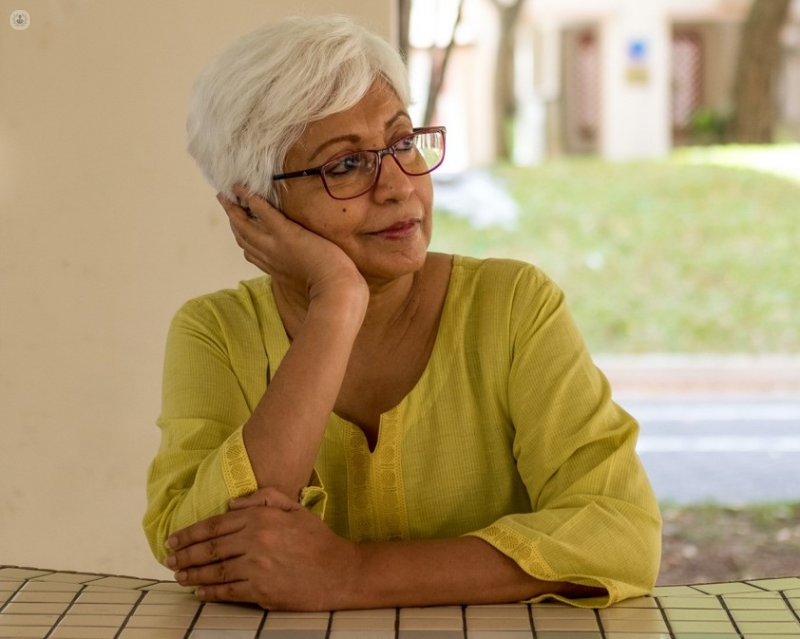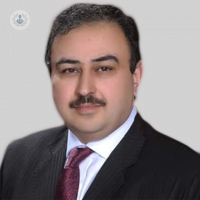How to get stronger and healthier bones and muscles
Written in association with:As we get older, our physical strength will inevitably decline. However, there are many ways of maintaining strong and healthy bones and muscles to ensure that we have the best quality of life possible.

Mr Turab Syed is an award-winning orthopaedic and trauma surgeon who sees patients across the UK. With his thorough knowledge of the human anatomy, he kindly talked us through why ensuring both our bones and muscles are in tip-top condition is so important.
Read on to find out how our diet affects our muscles and bones, and which supplements are exercises are recommended to boost bone health.
Why is it important to have strong bones and muscles?
It is self-evident as to why one needs strong bones and strong muscles. We want to be fit and healthy, and hence we must have strong bones and muscles alike as it's the basic architecture of the human body, like a house is made out of brick and mortar.
If we give the analogy of a tent—even if the tent has poles, it will only stay in position once guy ropes are attached to the top of the poles and are holding it into the ground. So, our muscles are like guy ropes that maintain the bone and allow for the function of the joints, and the bones allow us to be stable.
Bones provide a rigid structure that allows us to mobilise with the help of muscles. Even if it's a short walk from point A to B, we need to have strong bones and muscles. Not having strong bones can not only result in fragility and fractures but other problems.
If we have strong bones, then we can do activities, we are more resistant. With the help of strong bones we can stand up when we fall down. We can wipe our palms from the dust and walk away. If we have weak bones, then it can result in fractures. This would require treatment.
Similarly, if one has got weak muscles, one is not able to do many endurance activities. As we become more mature, muscle mass and strength also decreases, making it more difficult to walk as the body becomes frailer.
How do diet and nutrition affect bones and muscles?
Diet and nutrients have direct effects on the bones and muscles. Calcium is one of the main constituents of the bone and Vitamin D.
Good sources of Vitamin D include:
- Fish
- Fish oil capsules
- Sunlight.
An important constituent of collagen, which is the basic building block of muscles and bones, is vitamin C as all the collagen present in the tendons and bones gets modulated by this. In the old days, when sailors used to sail across to the other side of the globe, they wouldn't get enough vitamin C. This resulted in many of them getting scurvy and one of the first signs they would have noticed would be bleeding from the gums.
Similarly, in the presence of fractures, we find that people who are deficient in vitamin C have a higher risk of complex regional pain syndrome (CRPS). Hence one of the most common modalities to prevent CRPS is to have 1000mg of vitamin C daily after a fracture. Similarly, one should replace their calcium and vitamin D after a fracture to allow their bone to repair well and for their muscles to regenerate.
What exercise/activities can increase bone and muscle strength?
Weight-bearing activities can increase bone strength and muscle strength. For example, going to the gym to do exercise can put stress and strain on the muscles, increasing their mass and strength. Similarly, when people do weight-bearing activities, this would also increase the strength of the bones.
Can medical treatments improve bone and muscle health?
Yes, medical treatment can improve bone and muscle health, especially if someone is mature and they have been diagnosed with osteoporosis (the bones have become weaker) or if they have osteopenia. Osteopenia is when the bones have less minerals in them than normal (they're also at a higher risk of getting osteoporosis).
Medical treatment comes later, especially in women after they stop having their period. They would require treatment with bisphosphonates, which is pharmaceutical preparation to reduce cells' activity that disintegrates bones and makes the bones weaker.
In females, bone biology is dependent on the female sex hormones, and because of osteoporosis, the body stops making hormones from the ovaries. This has adverse effects on the muscles and bones.
However, in men, it is less dependent on sex hormones, and although men do get osteoporosis, it's to a lesser extent than females. Having a good healthy diet with enough vitamin D so that whatever amount of calcium you take can be absorbed through the gut is important. This generally does not require medical assistance.
Getting good amounts of vitamin D supplements can be as simple as buying supplements over the counter or visiting nature's free store. Sunbathing in the garden or on the beach, ensuring one doesn't expose oneself to too much sun and put themselves at risk of getting sunburnt, can help you get the recommended amount of vitamin D.
When is a check-up with an orthopaedic specialist a good idea?
Generally speaking, it has been a tradition that people go and see an orthopaedic specialist when they have got significant aches and pains in the joints and/or have developed arthritis. I think with the current advances in medical sciences it makes sense to see an orthopaedic specialist well before we develop any stage of arthritis as there is a range of modalities. For example, platelet-rich plasma, stem cells and other treatments can improve the final outcome and delay the final stages of osteoarthritis.
We go and do an MOT of our car, however, we forget to for our own human body, which is the most important asset we have. I recommend that people contact an orthopaedic specialist yearly to check on joints and do further investigations so that if any intervention is required, we do it early on to delay later stages of arthritis and avoid joint replacement surgery.
This may sound like I'm trying to reduce the number of surgeries I perform, but I would say that a stitch in time saves nine, and prevention is the best medicine. Prevention is the best orthopaedic medicine.
If you will require orthopaedic treatment, or if you will require more advice, we recommend speaking with a highly experienced orthopaedic and trauma surgeon such as Dr Turab Syed. Click here to visit his profile today for information on his expertise and appointment availability.


